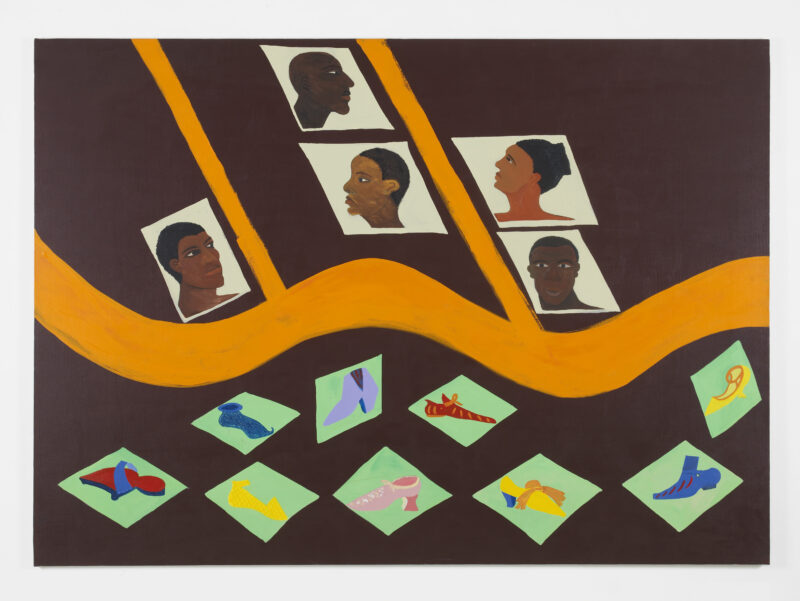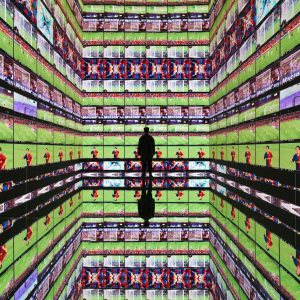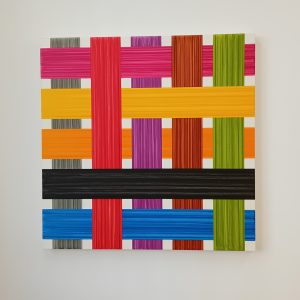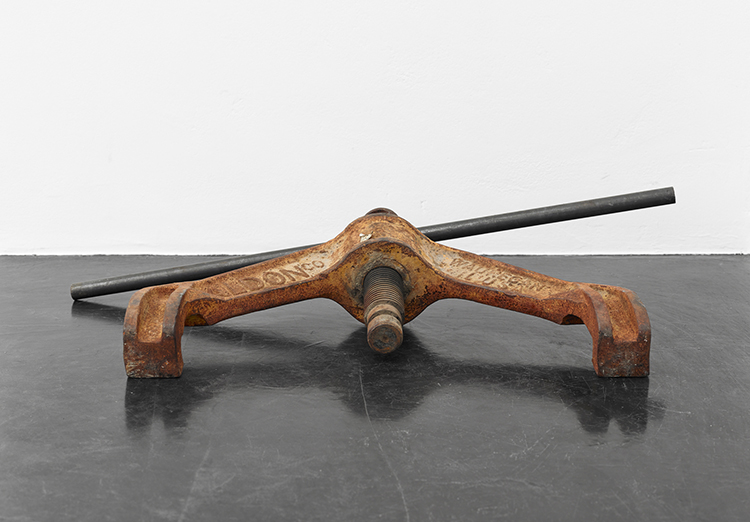
Cameron Rowland Jim Crow, 2017 Jim Crow rail bender 35 1/2 x 7 7/8 x 17 3/5 inches (91.4 x 20 x 44 cm) Jim Crow is a racial slur, derived from the name of the minstrel character played by Thomas D. Rice in the 1830s. A Jim Crow is also a type of manual railroad rail bender. It has been referred to by this name in publications from 1870 to the present. The lease of ex-slave prisoners to private industry immediately following the Civil War is known as the convict lease system. Many of the first convict lease contracts were signed by railroad companies. Plessy v. Ferguson contested an 1890 Louisiana law segregating black railroad passengers. The Supreme Court upheld the law as constitutional. This created a precedent for laws mandating racial segregation, later to be known as Jim Crow laws.
A new exhibition from Cameron Rowland: 3 & 4 Will. IV c. 73 opens at the ICA London on Tuesday 28th January.
WHEREAS divers Persons are holden in Slavery within divers of His Majesty’s Colonies, and it is just and expedient that all such Persons should be manumitted and set free, and that a reasonable Compensation should be made to the Persons hitherto entitled to the Services of such Slaves for the Loss which they will incur by being deprived of their Right to such Services.
– An Act for the Abolition of Slavery throughout the British Colonies; for promoting the Industry of the manumitted Slaves; and for compensating the Persons hitherto entitled to the Services of such Slaves, 1833.
29th January – 12th April 2020 Public opening: Tuesday 28th January, 6 – 8pm, all welcome
About The Artist
Cameron Rowland is an American artist, chosen as a MacArthur Fellow in 2019. He is one of the six fellows from New York City. Rowland graduated from Wesleyan University with a BA in 2011, and after being awarded the MacArthur Fellowship returned there to address the student body. He spoke about his 2018 work Depreciation that critically examined the economics of slavery. Cameron Rowland’s art has been featured in such collections as the Museum of Modern Art and the Museum of Contemporary Art, Los Angeles, among others.[3] Rowland’s artwork focuses on critiquing systems and institutions that perpetuate or benefit from racial injustices. Notably, his work featured in the Museum of Contemporary Art, entitled 2015 MOCA REAL ESTATE ACQUISITION, revealed the Museum’s history of benefiting from racist systems like redlining. In it, he used the Museum’s donor plaque listing the Community Redevelopment Agency of Los Angeles’s sale of the land on which the Museum sits to point out the 8.4 million dollar profit the Museum gained from the redlining process.[4] Other works of his use such objects as manhole leveller rings, wooden desks, and wooden benches manufactured by prison labourers for far less than minimum wage.
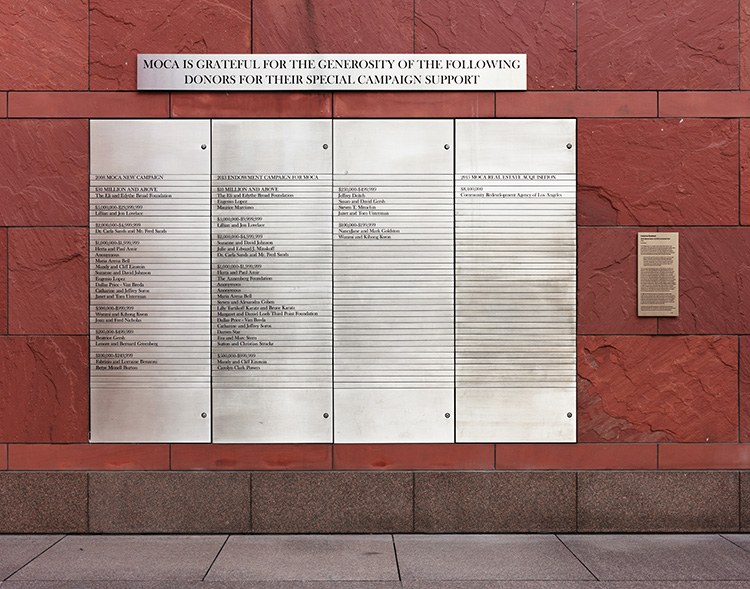
Cameron Rowland 2015 MOCA REAL ESTATE ACQUISITION, 2018 Donor plaque
The redlining map of Los Angeles drawn by the Home Owners’ Loan Corporation in 1939 gave Bunker Hill, block D37, the lowest possible rating. D37 extended from West 4th Street to West Temple Street, and from Figueroa Street to South Hill Street. The report indicated that residents were “low-income level” and were predominantly “Mexicans and Orientals.” The HOLC’s Residential Security Map report for Bunker Hill states:
It has been through all the phases of decline and is now thoroughly blighted. Subversive racial elements predominate; dilapidation and squalor are everywhere in evidence. It is a slum area and one of the city’s melting pots. There is a slum clearance project under consideration but no definite steps have as yet been taken. It is assigned the lowest of “low red” grade.
The Community Redevelopment Agency of the City of Los Angeles was formed in 1948 under the California Community Redevelopment Act of 1945, in conjunction with the 1937 and 1949 federal Housing Acts, which authorized its “slum removal.” The CRA was granted powers of eminent domain to be used in the redevelopment of “blighted” areas. A primary purpose for the CRA’s redevelopment projects was to increase tax revenue for the city. One of the first redevelopment projects proposed by the CRA was in Bunker Hill, on the basis that the neighborhood spent more tax dollars on police, firefighting, and healthcare than it generated. A CRA pamphlet promoting the project stated, “Blight is a liability, Blight is malignant, Blight is a social peril.” The CRA’s “slum clearance” project in Bunker Hill was adopted in 1959. Through seizure and through sales under the threat of eminent domain, all 7,310 residential units were demolished and their residents were forcibly removed. The CRA’s slum clearance in Bunker Hill was one of the first redevelopment projects to rely on tax increment financing.
In 1980, the CRA issued a request for proposals for a project called California Plaza. Proposals were required to include an outdoor pedestrian plaza, a parking structure, and a modern art museum. The winning group of architects called themselves Bunker Hill Associates. The museum outlined in this proposal became The Museum of Contemporary Art, Los Angeles. In 1983, the CRA offered MOCA a lease on the land located at 250 South Grand Avenue for a ninety-nine-year term at no rent.
In October 2015, the CRA sold the land at 250 South Grand Avenue to MOCA for $100,000. One month later, in November 2015, a tax assessment triggered by the sale recorded the value of the land at $8,500,000.
